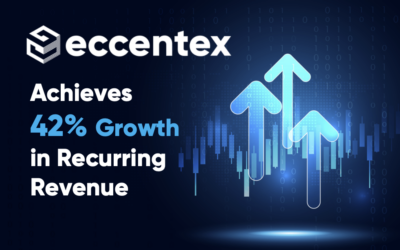In government agencies, cutting costs all too often equates to cutting corners. Budget priorities shift with each newly elected administration and are leveraged for political advantage. Oversight of public services such as Medicare frequently belongs to multiple agencies, and commercial entities that don’t communicate effectively with each other. Given these bureaucratic realities, it’s easy to see how things slip through the cracks, including fraud.
For many public-facing agencies, fraud-related losses have come to be regarded as an expected operating cost. A recent MeriTalk report points out that the federal government loses $300 billion annually to fraud, waste and abuse. Almost three-quarters of the federal managers surveyed claimed their agency was targeted by citizen fraud weekly, yet 42 percent of agencies are not employing any offensive measures to reduce fraud and abuse.
The IRS and Medicare are two of the largest public service agencies and are each responsible for billions in improper payments every year. Stephen Parente, a nationally recognized health finance expert and professor at University of Minnesota, claimed in a 2012 paper that up to 10 percent of health care spending is fraudulent, amounting to losses between $75 and $250 billion since 2009.
In recent years, the Centers for Medicare and Medicaid Services has invested in predictive analytics tools and has made some progress in detecting, preventing and prosecuting fraud. The Medicare Fraud Strike Force is a team of investigators from federal, state and local agencies using data analytics to take down fraudsters, including health care companies, doctors, nurses, therapists and patients. Applying analytics- and rules-based models to the big data of Medicare billing is also making it possible to automatically flag and stop suspect payments.
Experts hope that as predictive analytics technologies become more advanced and agencies grow more skilled in applying them, it will be possible to prevent a much higher percentage of improper payments. Stopping payments to criminals in the first place is obviously preferable to tracking down and prosecuting perpetrators after the fact.
But if there’s one constant in fraud and cyber crime, it’s that crooks are endlessly adaptive and creative. In order to bridge communication gaps between agencies and scale efforts to cover massive national services, investigatory tools will have to be comprehensive, flexible and affordable.
Dynamic case management solutions offer a way agencies can collect and store input (evidence, case records, etc.), track case-related communications, manage workflow and produce detailed reports and audit trails. Investigations supported by DCM can move seamlessly between automated processes and more complex, high-touch handling of exceptions. The ability to gather and store all relevant data and case history in a searchable format on a cloud-based platform enables meaningful collaboration and assignment of tasks among disparate departments and agencies. Mobile interfaces allows investigators to work remotely.
Cloud models are well suited to the bureaucratic realities of local and state agencies, where most of the investigatory work will actually occur. The procurement and installation of enterprise hardware and software solutions is too costly, requires expertise that many agencies can’t afford to hire and takes too long to become fully operational — if it ever does. The annals of government technology projects are rife with failed projects, wasted resources and systems that don’t integrate across agencies or data silos. Cloud-based solutions are automatically updated, easy to scale to more users and built to integrate with multiple systems, including third-party analytics providers.
A case management approach to the delivery of public services encompasses all the components needed for efficiency, quality and accountability. DCM brings together the expertise of the knowledge worker, systems such as business process management and enterprise content management, enhanced tracking and archiving of content, collaborative workflow management and data analytics. All these capabilities, working in concert, are required to tackle the enormously complex challenges presented by providing health care, public safety and tax services to millions of citizens across blended local-state-federal systems.
These vital social systems, and the citizens who rely on them, cannot afford to allow fraud and crime to run rampant. A dramatic increase in effective prevention and prosecution will deter the growth of fraudulent schemes and save billions of dollars so urgently needed for improvements and innovation in security, infrastructure, education and environmental projects.
About the Author
Alex Stein is founder and chief strategy officer for Eccentex Inc.



